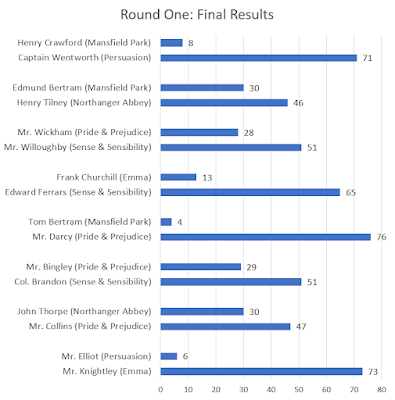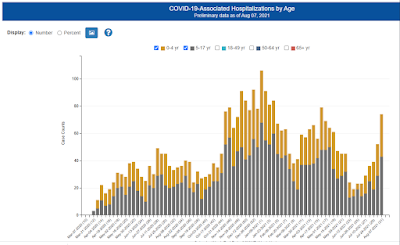One of the things that struck me while listening to the seasons of Mike Duncan's Revolutions podcast covering the English Civil War and the French Revolution was the weakness of the English and French monarchies prior to their respective revolutions. Both Charles I and Louis XVI struggled to raise enough money to pay for their governments, and the big thing which could push a monarch over into financial trouble (and thus the need to call into session a parliament which might in turn demand more power) was fighting a war.
 |
| Battle of Hohenfriedberg, 1745 |
War in the 1600s and 1700s required muskets, pikes, artillery, cavalry, and the training to use those weapons effectively in disciplined formations. Rather than relying on nobles to pull together scratch forces of a few highly trained men at arms and a large number of basically untrained peasants as might have worked a few hundred years before, winning wars in the early modern period required raising professional troops, equipping them, and paying them. And with the means of taxation available to pre-1800 monarchs, that was a dicey proposition. The chain of events leading to Charles I and Louis XVI both losing their heads to revolutionary parliamentary governments arguably started in both cases with war debts too large for the sovereign's taxation authority to pay off.
In both cases, the revolutionary governments themselves eventually built successful (and modern by the standards of their day) armies. However, here I'm going to focus on the French revolutionary army and what came afterwards, because it's the revolution which turned permanently towards a more totalizing approach to the nation state.
As the revolutionary French state lurched its way towards full overthrow of the monarchy in 1792, with the King and his family prisoners since their unsuccessful flight from Paris, the French state found itself at war without and within. In Sept, 1792, the French Army (still essentially the royal French army, with many of the officers loyal to the king) won the Battle of Valmy against invading Prussian and Holy Roman forces. However, it was clear that the old army was not large enough and its officer corps was not loyal enough, to fight revolutionary wars at home and abroad.
In Feb., 1793, the National Convention passed its initial national levy to recruit 300,000 troops, with a quota for each departement. (This on the one hand started to build the French army, but on the other pushed the Vendee and other anti-revolutionary areas into revolt, since anti-revolutionary Frenchmen did not want to be drafted.) So in August, 1793, the National Convention declared the Levée en Masse:
From this moment until such time as its enemies shall have been driven from the soil of the Republic, all Frenchmen are in permanent requisition for the services of the armies. The young men shall fight; the married men shall forge arms and transport provisions; the women shall make tents and clothes and shall serve in the hospitals; the children shall turn old lint into linen; the old men shall betake themselves to the public squares in order to arouse the courage of the warriors and preach hatred of kings and the unity of the Republic.
By the following year, the size of the French army had more than doubled from 645,000 in mid 1794 to 1,500,000 in Sept. 1794.
There is, of course, a supreme irony in the fact that the "tyrannical" Louis XVI was forced into near bankruptcy and thus negotiation with the Estates General, due to trying to pay for much smaller armies. During the Seven Years War, France fielded one of its largest forces in the war with 90,000 men at the Battle of Willinghausen. In the Wars of Revolution and the Napoleonic Wars, France would fight many battles of that size.
One of the stand-out generals in the Wars of Revolution was, of course, Napoleon. His victories in Italy brought him fame and power in France (and delivered much needed wealth to the French government) and despite a strategic loss in Egypt he became the virtual dictator of France and then Emperor. Napoleon's Grande Armee would conscript over 2,000,000 men from 1805 to 1813.
The major battles of the Napoleonic Wars were larger than those of the European wars that had come before, and France's contribution to them underscores the power of this "national mobilization" concept in terms of both raising troops and raising the money to equip them. Not only was the Battle of Leipzig by far the largest battle of the modern era to that date, but France (a nation of about 31 million people) was fighting a coalition of Russia, Austria, Prussia, Sweden, and others which had three times the population.
When revolutionary France had declared their mass army, they had stated the aspiration of inspiring similar revolutionary movements in other parts of the world. Back in Nov., 1792, the Convention had passed a resolution saying,
The National Convention declares, in the name of the French nation, that it will grant fraternity and assistance to all peoples who wish to recover their liberty, and instructs the Executive Power to give the necessary orders to generals to grant assistance to these peoples and to defend those citizens who have been—or may be—persecuted for their attachment to the cause of liberty. The National Convention further decrees that the Executive Power shall order the generals to have this decree printed and distributed in all the various languages and in all the various countries of which they have taken possession.
Their ability to inspire similar revolutions elsewhere was limited, but the fact that states could field such large armies by drawing on national feeling meant that developing a strong national identity and a state capable of harnessing it to conscript and field large armies became a key means of power.
During the course of the 1800s, states across Europe would build the capacity to similarly mobilize the nation for war. When reading Tolstoy's War & Peace (written in the 1860s and seeing the Napoleonic era in Russia through the lens of that later era) we see a strong image of Russia nationally mobilizing to fight off the French invasion. Whether this is the right way to took at Russia's actual war in 1805-1813 is perhaps open to question, but it is most certainly the case that by the 1860s Russia (like other European states) had developed this kind of national feeling.
The World Wars saw this capacity for national mobilization on full display.
While the Battle of Leipzig in 1813 saw half a million men on the battlefield, in the Battle of Galicia in 1914 between Austria-Hungary and Russia, 2.1 million men were deployed. On the Western Front, 2.0 million Germans and French (and a few British and Belgians) fought in the Battle of the Marne outside Paris.
Twenty-five years later, Germany and Russia invaded Poland with 2.0 million men in 1939, while Poland fielded 1.0 million to defend against the invader. The next year, when Germany invaded France, they did so with 3.4 million men, while the French and the British Expeditionary Force fought back with a combined 3.3 million men.
Of course, the population of Europe had become much larger during these centuries. However, if we divide the number of soldiers in these major European battles by the populations of the belligerent countries, we can get a sense of how modern nation states came to mobilize their populations for war at a level unimaginable in the early modern era.
The trend is a little easier to see if I average these battles:
As the world wars continued, mobilization became even more total. I selected the initial battles from both wars in order to give a sense of the level of mobilization which combatant countries were able to reach within mere months of the conflict starting.
1900-1945 was the era in which mass armies fed by universal conscription were the tools for dominance. However, in the years since, this has changed to some extent. People point to the atom bomb as a key difference, but much wider than that there is a whole technical package of modern warfare which allows countries to engage in resource-intensive war which is not as manpower intensive. No longer is the number of rifleman that a country can field the key determining factor of battlefield supremacy. For instance, in 1991 the US and Iraq had roughly similar numbers of troops in the field. In 2003, Iraq actually outnumbered total coalition troops by 20% (and outnumbered the US contingent of troops by nearly 50%) but the fight was even more unequal than before in terms of combat effectiveness.
The United States, China, and India have the three largest militaries in the world, and each of them is significantly smaller than the French and German armies which faced off in the Battle of France in 1940. China (the largest in terms of manpower) has 2.2M active military and another 0.5M in reserves. In 1940 France put 3.0M men into combat, despite having a population of only 41M as compared to China's current population of 1,400M.
While it's reasonable to think that in a modern non-nuclear great power war, the countries engaged would seek to recruit more soldiers, the technology involved means that such a war would be to a great extent a war of resources and technology, not a war of sheer numbers. Whether this change in military necessities will result in a change in commitment to the nation state (a reversal of the strengthening of national feeling from 1800 to 1900) remains to be seen. One could even argue that in some parts of the world it has already happened.






























